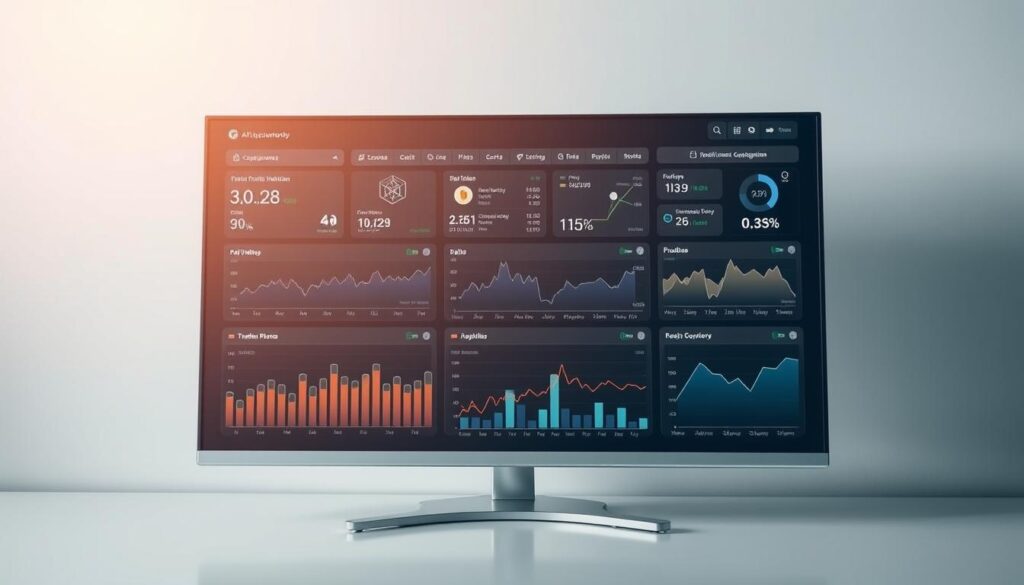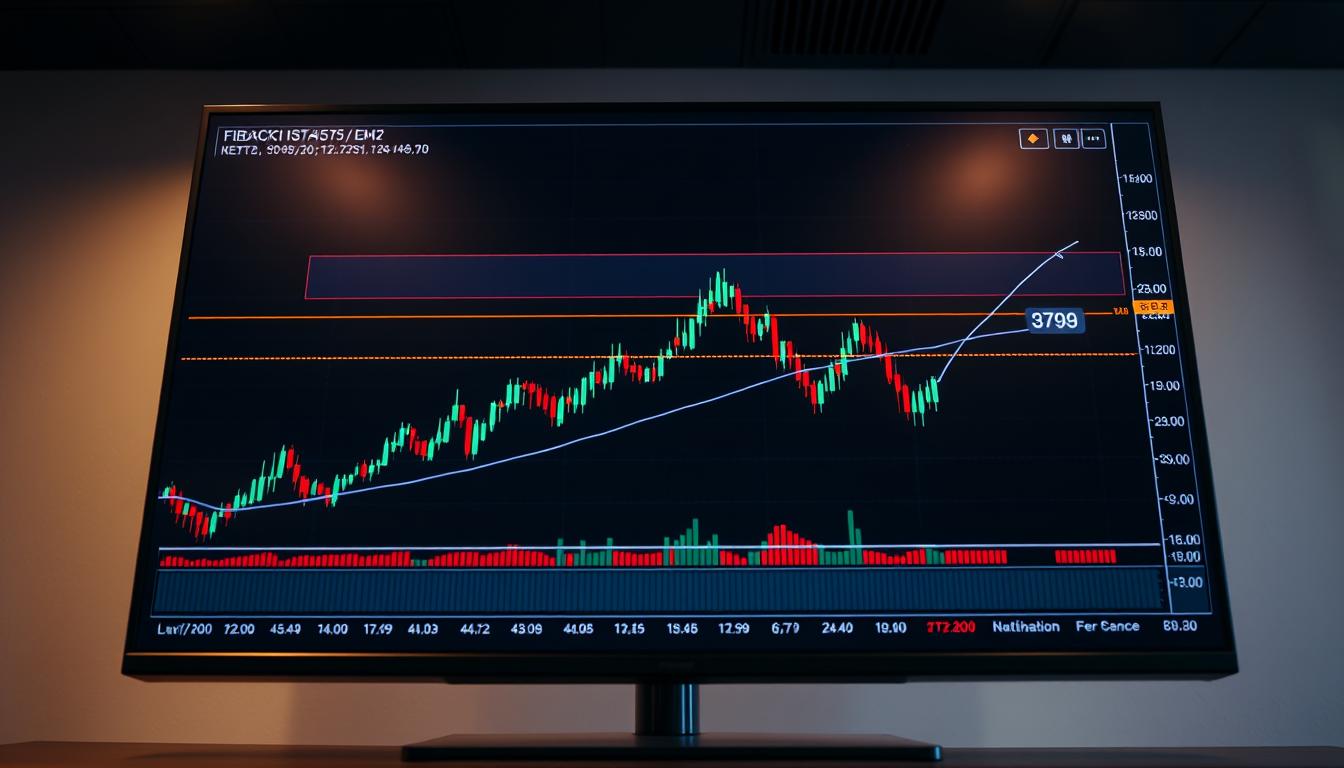Now Reading: Machine Learning Altcoin Discovery Platforms for Smarter Investments
- 01
Machine Learning Altcoin Discovery Platforms for Smarter Investments
Machine Learning Altcoin Discovery Platforms for Smarter Investments

The digital asset space moves at lightning speed. Thousands of new tokens appear each year, creating a complex and often overwhelming landscape for those looking to invest. Traditional research methods struggle to keep pace with this constant flood of information.
This is where advanced technology steps in. New systems use artificial intelligence to analyze massive datasets. They process market data, social sentiment, and on-chain activity far beyond human capability. This provides a powerful edge in a volatile market.
These innovative tools represent a major shift in how people approach the crypto world. They combine cutting-edge research with practical investment strategies. The goal is to help both new and experienced investors make more informed, data-driven decisions.
This guide will explore how these platforms work. We will look at their key features, real-world applications, and the tangible benefits they offer. Understanding this technology is key to navigating the future of digital asset investing.
Key Takeaways
- AI-driven tools analyze vast amounts of data to identify promising digital assets.
- They help investors cut through information overload in a fast-moving market.
- These systems process social sentiment and transaction patterns for deeper insights.
- They provide a systematic approach for both novice and experienced investors.
- The technology bridges advanced algorithmic research with practical investment applications.
- Adoption is growing as the crypto market matures and demands smarter tools.
Introduction to Machine Learning Altcoin Discovery Platforms
As blockchain technology evolves, the sheer volume of new token projects demands advanced analytical capabilities. Traditional research methods struggle to process thousands of emerging digital assets effectively.
Overview of Altcoin Discovery and AI Integration
The landscape for identifying promising cryptocurrencies has transformed dramatically. Manual research and community forums can no longer handle the scale of today’s crypto markets.
Artificial intelligence integration brings systematic analysis to this complex environment. These systems automatically scan new token launches and evaluate multiple data points simultaneously.

Why Investors Are Turning to AI-Driven Platforms
Investors face information overload when researching emerging cryptocurrencies. Traditional methods cannot scale to evaluate hundreds of daily token launches effectively.
AI-driven platforms process massive datasets from blockchain transactions and social sentiment. This provides comprehensive risk-reward profiles that manual analysis cannot match.
| Evaluation Metric | Traditional Methods | AI-Driven Approach |
|---|---|---|
| Data Processing Speed | Manual, time-consuming | Real-time analysis |
| Information Sources | Limited to public forums | Multiple integrated data streams |
| Pattern Recognition | Human intuition-based | Algorithmic pattern detection |
The innovation of combining artificial intelligence with cryptocurrency analysis addresses critical information gaps. This technology helps level the playing field for all market participants.
Understanding AI and Machine Learning in Crypto
Modern blockchain networks generate data at a scale that requires sophisticated analytical approaches. Artificial intelligence systems process this information to identify patterns human analysts might miss.

These systems use algorithms that learn from historical blockchain information. They analyze transaction patterns, wallet behaviors, and market trends without explicit programming for every scenario. This enables adaptive performance improvement over time.
The technology processes vast amounts of blockchain data including token holder distributions and smart contract interactions. It identifies meaningful correlations that help optimize network operations. This makes validation processes more efficient and environmentally sustainable.
| Learning Model Type | Primary Function | Crypto Application |
|---|---|---|
| Supervised Learning | Training on labeled historical data | Price prediction models |
| Unsupervised Learning | Discovering hidden patterns | Anomaly detection in transactions |
| Reinforcement Learning | Strategy optimization through trial | Automated trading systems |
AI algorithms can predict optimal transaction times by analyzing network congestion and fee trends. This reduces costs and increases execution speed for participants. The technology also detects fraudulent activities by flagging behaviors that deviate from established norms.
Understanding how intelligence systems process cryptocurrency data helps investors evaluate different analytical tools. This knowledge provides insight into the credibility of various market platforms.
Exploring Machine Learning Altcoin Discovery Platforms
Investment strategies in the crypto space are evolving from manual research to automated, data-driven approaches. These analytical systems process information at speeds impossible for individual investors.

Benefits for Smarter Cryptocurrency Investments
These tools provide systematic frameworks for evaluating digital assets. They focus on quantifiable metrics instead of hype or emotion.
Investors save significant research time through automated scanning. The systems filter thousands of tokens to surface quality opportunities.
Risk management improves with comprehensive red flag detection. The technology identifies issues like anonymous teams or suspicious patterns.
| Investment Aspect | Traditional Approach | Systematic Method |
|---|---|---|
| Research Time | Days or weeks | Real-time analysis |
| Risk Assessment | Gut feeling based | Data-driven metrics |
| Opportunity Discovery | Limited to known projects | Comprehensive market scan |
| Decision Consistency | Varies by emotion | Repeatable criteria |
The value extends to portfolio guidance and ongoing monitoring. This creates a level playing field for all market participants.
Key Features of AI-Powered Altcoin Platforms
The core strength of modern analytical systems lies in their sophisticated data processing capabilities. These tools transform raw blockchain information into actionable investment intelligence.
Data Analytics and Real-Time Market Insights
Advanced data analytics form the foundation of every effective system. They process on-chain metrics like transaction volume and holder concentration.
This provides a clear view of project health and growth potential. The depth of analytics separates basic tools from powerful ones.

Real-time insights are another critical advantage. Systems monitor price movements and social trends across hundreds of tokens simultaneously.
This allows users to respond quickly to emerging opportunities. Speed is essential in fast-moving market conditions.
| Feature | Basic Platform | Advanced System |
|---|---|---|
| Data Processing | Limited metrics | Comprehensive on-chain analysis |
| Alert System | Manual checks | Real-time notifications |
| Customization | Fixed filters | User-defined criteria |
Predictive algorithms forecast potential price movements. They analyze historical patterns and broader market correlations.
Customizable screening tools let users define their own search criteria. This personalization saves time and improves trading efficiency.
For the most current analytics, many investors rely on specialized services for real-time AI crypto signals. These services integrate multiple data streams.
Visual dashboards translate complex data into easy-to-understand charts. This helps investors make informed decisions quickly.
Analyzing Platform Performance Metrics
Holder count has emerged as a fundamental metric for assessing token viability. This data point reveals how widely a digital asset is distributed across the community.
Holder Count and Community Engagement Signals
Unlike market cap or trading volume, holder count measures unique wallet ownership. This provides insight into the diversity of the investor base.
Projects with more holders typically show stronger community support. They demonstrate broader participation during events and create more resilient price floors.
| Performance Metric | What It Measures | Why It Matters |
|---|---|---|
| Holder Count | Unique wallet distribution | Shows community breadth and adoption |
| Market Cap | Total token valuation | Indicates overall market size |
| Trading Volume | Transaction activity level | Reflects current market interest |
| Holder Growth Rate | New participant acquisition speed | Predicts potential price appreciation |
Real-world data from various tokens shows significant distribution variation. New XAI gork leads with 15,687 holders, while Chill House follows with 16,291.
Token Metrics Live (TMLIVE) captured 876 holders in its first 22 hours after launch. This rapid adoption demonstrates how established audiences translate to immediate token holder growth.
Advanced users track secondary signals like average hold time and wallet age distribution. These analytics help distinguish genuine long-term community members from short-term speculators.
Utilizing Machine Learning for Smarter Investment Decisions
Sophisticated computational methods now provide unprecedented capabilities for identifying promising opportunities. These systems transform how investors approach the digital asset space.
Advanced algorithms enable proactive rather than reactive decisions. They analyze historical patterns that often precede successful token performance.
This creates predictive models forecasting which characteristics correlate with future gains. The technology processes multidimensional data simultaneously.
It considers technical indicators, fundamental metrics, and sentiment scores. This comprehensive analysis exceeds human cognitive capacity for complex pattern recognition.
These systems help investors avoid common behavioral biases. They enforce systematic evaluation frameworks that remove emotion from the selection process.
Backtesting capabilities allow users to refine their strategies against historical data. This helps understand how criteria would perform during different market cycles.
The continuous learning capability means these tools improve over time. They capture subtle nuances in token behavior patterns as they ingest more market information.
Smarter decisions emerge from combining quantitative analysis with human judgment. Investors use AI-generated insights as one input into their broader decision framework.
Integrating AI with Blockchain for Enhanced Security
The security landscape in digital assets has transformed through technological integration. Combining artificial intelligence with blockchain creates powerful protection systems that address vulnerabilities traditional methods might miss.
This integration enhances operational efficiencies by automating complex validation processes. It reduces human error while improving detection accuracy across networks.
Smart Contracts and Fraud Detection Mechanisms
Advanced algorithms analyze smart contract code to identify vulnerability patterns before deployment. This proactive approach reduces risks of hacks and fraudulent activities that have impacted the crypto industry.
Fraud detection systems monitor blockchain networks continuously. They analyze transaction patterns and wallet behaviors that deviate from established norms.
The security benefits include:
- Automated vulnerability scanning for smart contract code
- Real-time anomaly detection in transaction patterns
- Adaptive security parameters that adjust to market conditions
- Wallet protection against unauthorized access attempts
Blockchain’s transparent nature provides perfect data for AI analysis. Every transaction remains permanently recorded for pattern analysis that improves over time.
This technology represents a significant advancement in token security. It protects investors while maintaining network integrity across various blockchain applications.
Market Trends and Innovations in AI-Driven Crypto Platforms
Recent advancements in computational technology are reshaping how investors approach the dynamic cryptocurrency ecosystem. The adoption of sophisticated analytical tools continues to accelerate across both retail and institutional segments.
Current market trends show significant expansion beyond single blockchain networks. Systems now integrate with multiple chains including Solana, Binance Smart Chain, and Polygon. This multi-chain approach captures emerging opportunities across diverse ecosystems.
The demand for these analytical solutions grew substantially following recent market cycles. Investors now seek systematic frameworks after experiencing volatility. This shift represents a maturation in cryptocurrency investment approaches.
Emerging innovations include natural language processing capabilities. These systems analyze project documentation and social discussions. They extract sentiment signals that complement quantitative metrics.
Prediction mechanisms represent another significant development. Community members can stake tokens on their convictions about specific assets. This creates aggregated probability estimates that supplement algorithmic analysis.
The future points toward increased personalization in these tools. Systems learn individual preferences and risk tolerances over time. This enables customized recommendations rather than generic screening results.
Cross-platform intelligence sharing is becoming more prevalent. Anonymized performance data from multiple users improves models through federated learning. All participants benefit while maintaining privacy.
User experience design continues to evolve rapidly. Complex insights become accessible through intuitive interfaces and natural language explanations. Trading automation integration completes the end-to-end solution from discovery to execution.
Case Studies of Leading Platforms in the Current Market
Examining actual performance data from recent token launches provides valuable insights into what drives genuine community adoption. These real-world examples reveal patterns that separate sustainable projects from short-lived ventures.
Insights from TMLIVE and Pump.fun Data
Token Metrics Live (TMLIVE) offers a compelling case study in successful platform launches. Backed by seven years of consistent programming, the team demonstrated early identification of major winners like MATIC and Helium in 2018.
The TMLIVE token launched on November 4, 2024, achieving remarkable metrics. It reached a $291.7K market cap with $1.7M in 24-hour volume during its first stream. The project captured 876 holders within just 22 hours.
This rapid adoption highlights the power of existing audience conversion. TMLIVE’s research-first approach distinguishes it in a meme-heavy category. Structured content delivery creates substance beyond pure speculation.
| Platform Metric | TMLIVE Performance | Industry Average | Significance |
|---|---|---|---|
| Initial Holders (22 hours) | 876 holders | 200-400 holders | Strong community foundation |
| 24-hour Volume | $1.7 million | $500K-$1M | High engagement levels |
| Market Cap ATH | $291.7K | $100K-$200K | Substantial early valuation |
| Audience Conversion | 500K+ base | 50K-100K typical | Established credibility advantage |
Community Engagement and Adoption Trends
Platforms like Pump.fun reveal critical patterns about holder economics. TMLIVE’s concentrated early interest came from research-focused users rather than pure speculators.
Current market trends show projects with consistent content schedules maintain higher retention. Transparent communication and value delivery beyond price speculation create stable holder bases over time.
Comparative analysis across different tokens demonstrates varying community economics. Some projects achieve broad distribution with modest valuations, while others show concentrated support driving significant market caps.
AI Cryptocurrencies: Trading and Predictive Analytics
Automated trading systems represent the cutting edge of modern cryptocurrency market participation. These platforms use sophisticated algorithms to analyze vast amounts of data and execute trades with precision timing.
The primary advantage lies in removing emotional decision-making from the process. Systems execute strategies consistently based on predefined criteria rather than fear or greed.
Predictive analytics form the core of these advanced trading tools. They forecast future price movements by analyzing historical patterns and technical indicators.
| Trading Aspect | Traditional Approach | AI-Driven System |
|---|---|---|
| Decision Making | Emotion-based reactions | Algorithmic consistency |
| Market Monitoring | Limited hours | 24/7 operation |
| Data Processing | Manual analysis | Real-time computation |
| Error Rate | Human variability | Minimal systematic errors |
These systems process multiple data streams including exchange order books and social sentiment. This creates comprehensive market predictions with probability-weighted scenarios.
The cryptocurrency markets operate continuously, making AI trading particularly valuable. Algorithms capture opportunities during overnight hours when human traders sleep.
Advanced platforms incorporate reinforcement learning for continuous improvement. As research shows in recent studies, these systems adapt to changing market conditions over time.
Real-World Applications of Machine Learning Models in Crypto
Daily investment activities now incorporate sophisticated analytical frameworks that were once confined to academic papers. These machine learning models have moved from theoretical concepts to practical tools that investors use regularly.
Automated Trading Strategies and Risk Management
Automated trading strategies powered by advanced algorithms execute trades based on predefined conditions. These systems analyze multiple data streams simultaneously to identify optimal entry and exit points.
Risk management represents a critical application of these models. They continuously monitor portfolio exposure and market conditions to alert investors about potential risks.
The most effective strategies adapt to changing market conditions automatically. They recognize when historical patterns break down and adjust their approach accordingly.
These systems help investors make better decisions by removing emotional biases from the process. They enforce disciplined execution regardless of short-term market fluctuations.
In volatile crypto markets, these applications provide essential protection against sudden price movements. They represent the practical implementation of sophisticated learning models that benefit both institutional and retail investors.
Decentralized AI Blockchain Projects and Trends
The convergence of artificial intelligence with decentralized networks is reshaping how computational resources are distributed and accessed globally. These projects represent a significant innovation in the crypto space.
Decentralized approaches enhance data security and privacy. Blockchain ensures transparent environments where manipulation becomes extremely difficult. This creates more robust systems.
Projects like SingularityNET demonstrate this model effectively. They offer marketplaces where users can access algorithms without central authorities. Ocean Protocol shows secure data sharing for AI applications.
The integration with DeFi is growing rapidly. Decentralized trading protocols and lending platforms now incorporate intelligent features. This creates new opportunities in digital markets.
Adoption trends show increasing interest from developers and investors. Token economics align incentives across networks. The blockchain infrastructure supports diverse computational needs.
Current innovation focuses on layer-2 solutions and privacy-preserving techniques. These address computational challenges while maintaining blockchain benefits. The future looks promising for this integration.
Challenges and Limitations of AI in Cryptocurrency Investments
Artificial intelligence systems for crypto investments face scalability and regulatory obstacles that impact their effectiveness. These challenges require careful consideration by investors using automated tools.
Scalability represents a fundamental limitation. As transaction volumes grow, blockchain networks experience slower processing times. AI models struggle with expanding data sets across multiple chains.
Scalability Issues and Regulatory Hurdles
Regulatory uncertainty creates significant risks for AI-driven strategies. Legal frameworks can change suddenly, affecting entire token categories. Models cannot easily predict these shifts.
Data quality presents another major challenge. On-chain information provides reliable but incomplete pictures. Social data often contains noise and manipulation attempts.
Key limitations include:
- Security vulnerabilities in automated trading systems
- Privacy concerns when platforms access wallet histories
- Market structure differences from traditional finance
- Computational resource demands for real-time analysis
These challenges mean AI should augment human judgment rather than replace it. Combining algorithmic insights with qualitative assessment creates more robust investment approaches in the volatile cryptocurrency market.
Future Outlook for Machine Learning and Crypto Integration
As artificial intelligence becomes more deeply woven into blockchain infrastructure, new possibilities emerge. The relationship between these technologies will create smarter, more personalized investment tools. These systems will understand individual preferences better than ever before.
The blockchain industry’s growing maturity provides richer data for training models. Years of market cycles and regulatory developments enable more accurate pattern recognition. This data foundation supports increasingly sophisticated analytical capabilities.
Cross-chain intelligence represents another exciting innovation. As interoperability protocols advance, systems will track capital flows across multiple ecosystems. This helps identify emerging trends before they become widely recognized.
Regulatory clarity will eventually enable broader institutional adoption of these tools. Professional-grade risk management and compliance features will reach mainstream platforms. This development could significantly impact the entire crypto market.
The ultimate vision involves democratizing access to sophisticated analysis. Retail investors worldwide may soon leverage tools previously available only to well-resourced funds. This represents a significant shift in how people approach digital assets.
Creator Strategies for Harnessing AI in Investment Platforms
Content creators are developing sophisticated approaches to integrate artificial intelligence into their investment analysis workflows. These strategies help build sustainable communities around analytical platforms.
TMLIVE demonstrated the power of establishing credibility before token launch. Seven years of consistent content created trust that translated to rapid adoption.
Successful creators focus on structured content delivery. They run 45-60 minute shows with clear segments that provide reusable frameworks.
Multi-channel distribution gives creators a competitive edge. Coordinating announcements across social platforms maximizes day-one reach and holder conversion.
Continuous measurement is crucial for community management. Tracking viewer-to-holder conversion rates helps refine content strategies.
Production quality prevents audience drop-off before conversion. Stable audio and video infrastructure maintain credibility in competitive attention markets.
The growing demand for creator-led platforms combines human expertise with systematic analysis. This hybrid approach offers both relational connection and analytical rigor.
Conclusion
Navigating the complex world of digital assets requires sophisticated approaches that traditional methods can no longer provide. Artificial intelligence tools represent a fundamental shift in how investors approach cryptocurrency markets.
These systems offer a significant competitive edge through automated analysis and real-time insights. They help investors make better decisions by processing vast amounts of market data efficiently.
The future points toward more personalized tools with enhanced risk management capabilities. While challenges remain, the technology continues to evolve rapidly.
Ultimately, these analytical systems democratize access to professional-grade investment intelligence. They level the playing field for all participants in the dynamic crypto ecosystem.
FAQ
How do these platforms use data analytics to identify promising digital assets?
They process vast amounts of market data, including price movements, trading volume, and on-chain activity. Advanced algorithms analyze this information to detect patterns and trends that may indicate future value, giving investors a significant edge.
What role do smart contracts play in enhancing security on these platforms?
Smart contracts automate processes and enforce rules transparently on the blockchain. This integration helps create robust fraud detection mechanisms, reducing risks and increasing trust in the platform’s operations and investment recommendations.
Can these tools effectively manage the high volatility of cryptocurrency markets?
Yes, many platforms incorporate real-time analytics and predictive models designed to assess volatility. They help users develop automated trading strategies that include risk management protocols to navigate rapid price changes more effectively.
What are the current innovations in decentralized AI blockchain projects?
Key innovations focus on creating more efficient and scalable networks. Projects are integrating AI to optimize consensus mechanisms and improve data analysis for DeFi applications, driving the next wave of adoption in the crypto space.
What challenges do AI-driven investment platforms face regarding regulations?
Regulatory hurdles are a significant challenge. The evolving landscape for digital assets creates uncertainty. Platforms must navigate compliance issues across different jurisdictions, which can impact scalability and the features offered to users.















